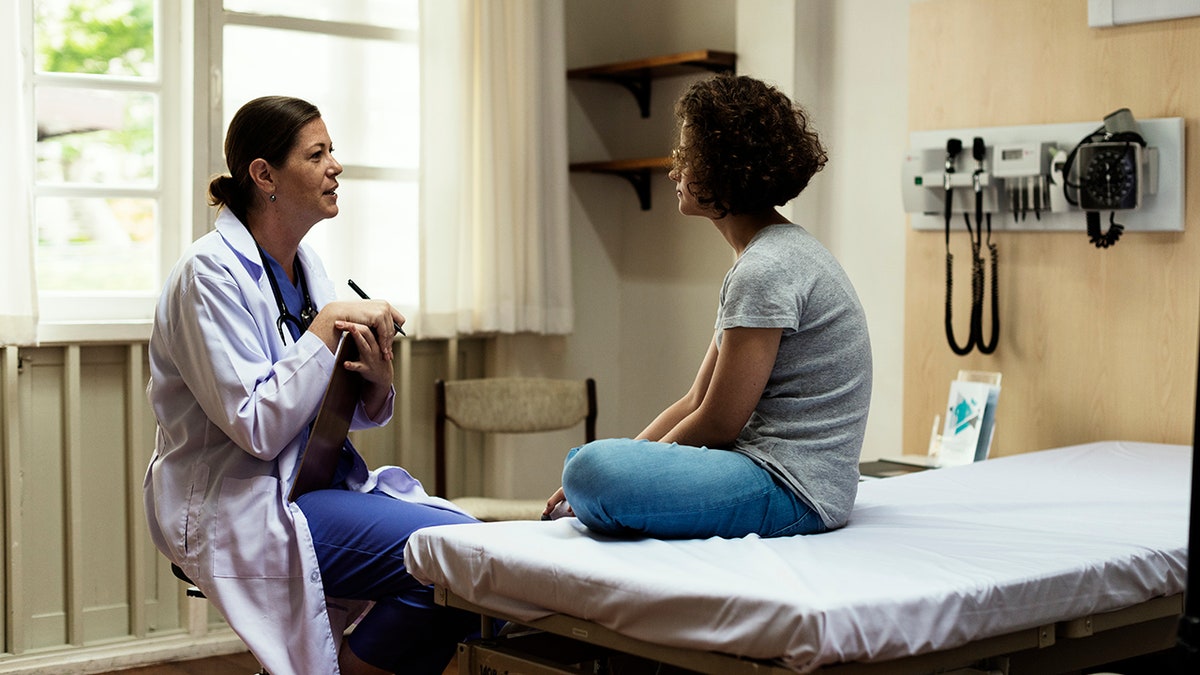Pop singer Lance Bass recently shared on social media that he has type 1.5 diabetes, also known as latent autoimmune diabetes in adults (LADA).
The former NSYNC member was initially diagnosed with type 2 diabetes a few years ago, he wrote in an Instagram post.
“But when I was first diagnosed, I had a difficult time getting my glucose levels under control even though I made adjustments to my diet, my medications and my workout routine,” he said. “Things just weren’t adding up.”
DIABETES PATIENTS NOW HAVE ACCESS TO FIRST GENERIC GLP-1 MEDICATION: ‘MORE ACCESSIBLE AND AFFORDABLE’
Bass then revealed what he referred to as a “plot twist.”
“I recently discovered that I was misdiagnosed and I actually have type 1.5, or latent autoimmune diabetes of adults [LADA].”
Fox News Digital reached out to Bass for comment.
What is type 1.5 diabetes?
Type 1.5 diabetes is considered an autoimmune disease in which the body’s immune system mistakenly attacks cells in the pancreas — called beta cells — that secrete insulin, a hormone that helps to regulate glucose levels in the body, according to experts.
The condition is typically diagnosed in individuals age 30 and older and progressively worsens over time.
DIABETES PATIENTS USING OZEMPIC, OTHER TREATMENTS INSTEAD OF INSULIN HAVE LOWER CANCER RISK, STUDY FINDS
“Like type 1 diabetes (T1DM), LADA is an autoimmune disease, but unlike T1DM, the decline in beta-cell function occurs much more slowly,” Dr. Silvana Obici, chief of the Division of Endocrinology at Stony Brook Medicine on Long Island, New York, told Fox News Digital in an email.
The American Diabetes Association (ADA) classifies LADA as a subset of Type 1 — “because they are all characterized by autoimmunity and only differ in the rate of beta cell destruction,” said Obici, who has not treated Bass.

The symptoms of type 1.5 diabetes are similar to those of type 1 and type 2 diabetes, but there are also some differences.
“Although type 1 is often associated with increased thirst, increased urination, increased hunger and weight loss, these symptoms are less common in both LADA and type 2 diabetes,” Dr. Kevin Peterson, vice president of primary care for the ADA, who also has not treated Bass, told Fox News Digital.
EATING YOGURT COULD HELP PREVENT ONE COMMON DISEASE, ACCORDING TO THE FDA
“Both of these conditions can have a slow onset that is characterized by fatigue, urinary tract infections, blurred vision and mild problems that can sometimes be ignored.”
Unlike type 2 diabetes, LADA is associated with a progressive loss of insulin that can’t be controlled by lifestyle changes like diet and exercise, and may not respond to medicines used to treat type 2 diabetes, Peterson added.
Chance of misdiagnosis
Some 10% of adults with type 1.5 diabetes are initially misdiagnosed as having type 2 diabetes, studies show.
With LADA, “the presentation is often slow, making it difficult to distinguish between the two conditions, especially early in the diagnosis,” said Peterson.

Blood tests are available that can identify the type of diabetes, he noted.
Dr. David Lam, an associate professor in the division of endocrinology, diabetes and bone diseases at the Icahn School of Medicine at Mount Sinai in New York, did not comment on Bass’ case, but agreed that type 1.5 diabetes can be misdiagnosed.
Over 1 million Americans are diagnosed with diabetes every year, with approximately 10% of those having type 1.5.
“Testing for the autoantibodies is not standardized for all patients newly diagnosed with diabetes — it typically occurs because the clinician has a degree of suspicion of the diagnosis,” Lam told Fox News Digital.
“This is typically based on elements of the person’s clinical history, such as onset of diabetes at a younger age, lower body mass index, or a family or personal history of other autoimmune conditions,” he added.
Treatment and intervention
Although LADA shares some of the same symptoms as type 1 and type 2 diabetes, experts noted that its treatment can be different.
“Early in the course of type 1.5 diabetes, the pancreas may still make enough insulin, so there may be only mild glucose abnormalities,” Lam told Fox News Digital.
FOR DIABETES PATIENTS, INHALED INSULIN IS SHOWN JUST AS EFFECTIVE AS INJECTIONS AND PUMPS
During this period, treatments traditionally used for type 2 diabetes may work, he noted — “but as the condition progresses, and the pancreas’ ability to produce insulin significantly decreases, injected insulin therapy becomes necessary to control blood glucose levels.”
Treatment is also challenging because type 1.5 diabetes progresses at different rates for each individual and can be difficult to predict, Lam noted.

Specific medications for the disease will depend on the severity of the beta cells’ deficiency, Obici said.
“If the amount of insulin produced by the beta cells is very low, these individuals will require insulin, as with type 1 diabetes,” he told Fox News Digital.
“On the other hand, if the beta cells produce some or a substantial amount of insulin, LADA can be treated with a combination of insulin and other medications used for type 2 diabetes, such as metformin, GLP-1 receptor agonists and DPPIV inhibitors.”
All types of diabetes must be managed with dietary intervention, according to Obici.
CLICK HERE TO SIGN UP FOR OUR HEALTH NEWSLETTER
“In T1DM and LADA, dietary intervention is focused on helping to keep glycemia under control and to avoid hypoglycemia,” he said.
“In T2DM, diet and lifestyle modification is focused not only on glycemic control, but also on promoting weight loss.”

Dr. Brian Burtch, an endocrinologist at University Hospitals in Cleveland, Ohio, who was not involved in Bass’ care, told Fox News Digital that his practice sees at least one case of type 1.5 diabetes each month.
For those who are told they have type 2 diabetes and are young, not overweight and not responding to pills, Burtch typically recommends they ask about being tested for type 1.5.
For more Health articles, visit www.foxnews/health
“As a physician, it is important to always consider this diagnosis in diabetes patients,” he advised.
Approximately 1.2 million Americans are diagnosed with diabetes every year, with some 10% of those having type 1.5, according to the ADA.
Read the full article here











